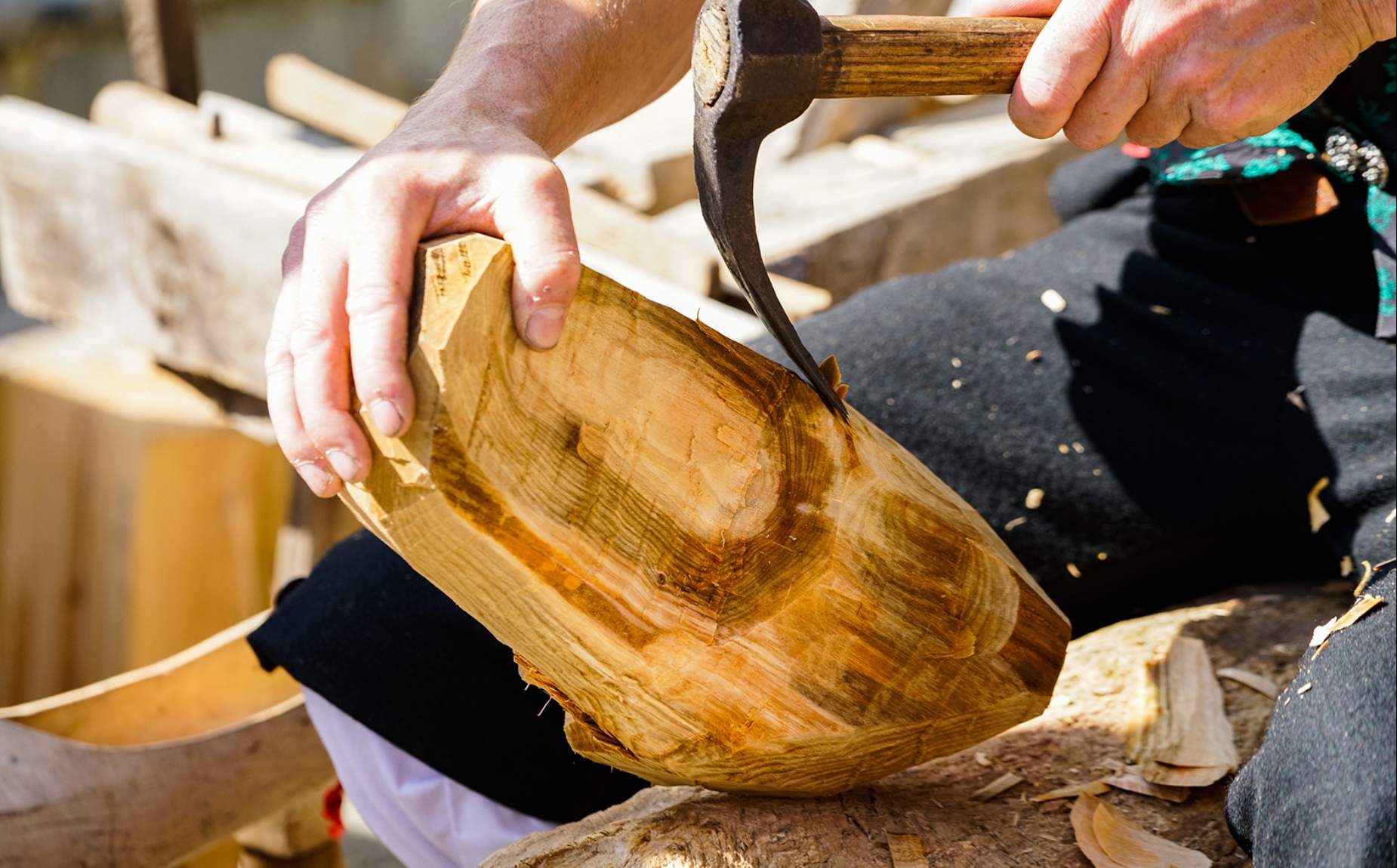Traditions
Immerse yourself in our tradition
Discover Redes through its three treasures
If you are one of those who like to look for what defines a territory by exploring its traditions, we give you three keys: cheese, wood and water.
The homemade cheese
It is likely that during your forays in the mountains of Redes you will come across cows, as they graze freely in the meadows for a good part of the year. Reddish-brown in color, they may seem rather small to you. It is the Casina cow (or Asturian cow from the mountains), autochthonous, and linked to the production of a singular cheese: The Casín cheese is made according to a purely artisan tradition, with an unusual technique (it kneads the curd with a rennet machine) transmitted by women through the generations, with no other raw material than milk and rennet. This cheese, one of the oldest in Spain, has a Protected Designation of Origin (P.D.O.). In the cheese dairies of Queso Casín you can, besides tasting and buying it, learn about its history, evolution and elaboration from its producers, and more and more restaurants in the area not only offer Casín as a dessert, but also include it in their recipes and culinary specialties.
Wood
In a natural space that despite the passage of time still retains forest in almost half of its territory, it is easy to imagine the importance of the use of wood in construction, in the manufacture of tools and household items, and of course, in craftsmanship. And more specifically, in a craft activity that is a hallmark of the Redes Natural Park: the elaboration of "madreñas". Madreñes, to be more precise. The elaboration of this traditional footwear, typical of a mountainous area, acquired great importance in Redes, which provided renowned "madreñeros". The Museum of Wood and Madreña of Veneros is a key piece to know and understand the different aspects related to this activity, besides having an interesting collection. You will discover the secrets of craftsmanship and the art of making "madreñes".
Water
From the moment the Nalón River springs from the Nalona Spring and flows down through the Park, until it reaches its storage in the Tanes and Rioseco Reservoirs, water is and transmits life; it is and transmits the history of this Biosphere Reserve. Water is a source of history in the Nalona Spring, in the surroundings of Puerto de Tarna, which was a first-hand witness of the Spanish Civil War, and where vestiges of the forts built at that time are still preserved.It seems incredible that this thread of water will soon become the largest and longest river in Asturias: the Nalón River, which is a source of life in the fertile plains, irrigating the orchards and used as a driving force for hydraulic devices such as mills (present in Asturias since the eleventh century), used to obtain flour. Some have been restored, such as the Molín de Villamorey and the Molín del Ponticu (in Ladines), and water, as a source of energy, is linked in modern times to the two reservoirs, Tanes and Rioseco. And among them, the subway hydroelectric power station of Tanes, work of Joaquín Vaquero Palacios, which stands out for its murals and integration into the rock. This has earned it the nickname of "subway cathedral".




